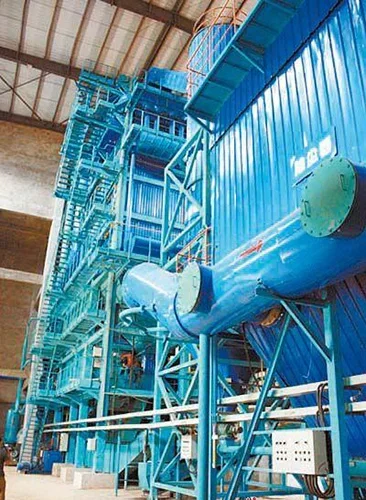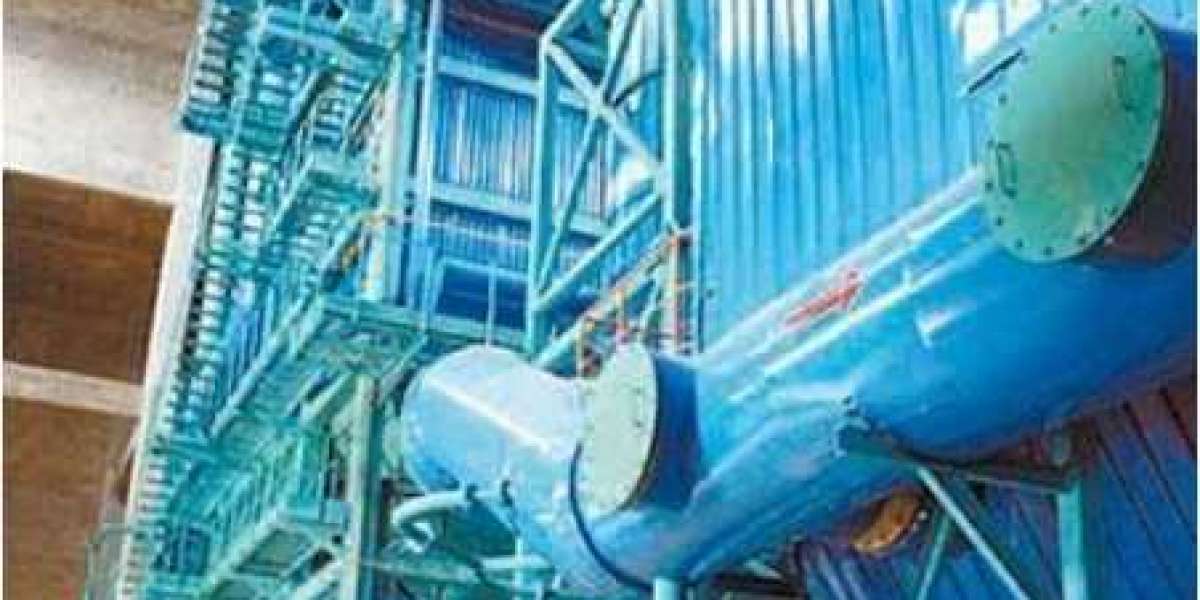Circulating fluidized bed boilers offer efficient and environmentally friendly solutions for power generation. By utilizing a unique combustion technology, these boilers can burn a variety of fuels while reducing emissions. The circulating fluidized bed boiler's ability to operate at lower temperatures helps in minimizing NOx emissions, making it a sustainable choice for energy production. The flexibility to use different fuel types makes it a versatile option for various industries seeking cleaner energy solutions.
What is a Circulating Fluidized Bed Boiler
Fuel Flexibility
Circulating Fluidized Bed (CFB) boilers utilize solid fuels such as coal for energy production. The combustion chamber in CFB boilers suspends solid fuel particles in an upward flow of combustion air.
The unique feature of CFB technology lies in its exceptional fuel flexibility. This allows CFB boilers to efficiently burn a variety of solid fuels, ranging from low-grade fuels to biomass and waste materials.
Impact on Emissions
By enabling the use of various solid fuels, CFB boilers play a significant role in reducing CO2 emissions. The efficient combustion process in these boilers results in lower greenhouse gas emissions compared to traditional coal-fired power plants.
CFB technology's ability to burn fuels with lower carbon content contributes to mitigating environmental impact, making it a preferred choice for sustainable energy generation.
Diverse Customer Base
CFB boilers cater to a diverse range of customers, from industrial steam generation applications to large-scale thermal power stations. Industries such as chemical, paper, and food processing benefit from the high efficiency and reliability offered by CFB boilers.
Power plants utilizing CFB technology are capable of generating electricity while meeting stringent environmental regulations. This versatility makes CFB boilers an attractive option for industries seeking both energy efficiency and environmental sustainability.
Understanding Fluidization Regimes
Minimum Fluidization
Minimum fluidization is the point at which solid particles in a bed start to behave like a fluid with the introduction of gas. This regime sets the foundation for efficient combustion processes in CFB boilers.
Fluidization allows for better mixing between fuel and air, enhancing combustion efficiency by promoting uniform temperature distribution within the boiler. The ability to operate at lower temperatures helps reduce harmful emissions, making it an environmentally friendly choice.
Recirculation Mechanisms
Recirculation mechanisms play a crucial role in achieving high combustion efficiency when dealing with challenging fuels. By recirculating a portion of the flue gas back into the combustion chamber, gas velocities are adjusted to enhance mixing and improve combustion performance.
The inclusion of recirculation systems aids in maintaining optimal solids fluxes, ensuring that fuel particles are evenly distributed throughout the bed. This process contributes to stable combustion conditions, especially when burning fuels with varying properties.
Gas Velocity Profile and Temperature Distribution
In circulating fluidized bed boilers, understanding the gas velocity profile is essential for controlling the movement of solid particles within the system. By regulating gas flow rates, operators can maintain proper mixing levels and prevent issues such as particle agglomeration or uneven temperature distribution.
Maintaining a uniform temperature profile across the bed is critical for maximizing combustion efficiency and minimizing emissions. Proper fluidization ensures that heat is evenly distributed, leading to complete combustion of fuel particles and reduced environmental impact.

Advantages of CFB Boilers
Improved Combustion
CFB boilers offer improved combustion, leading to enhanced efficiency and reduced emissions. The unique design promotes better mixing of fuel and air, resulting in more complete combustion.
The lower combustion temperatures in CFB boilers help in reducing NOx emissions, making them environmentally friendly compared to conventional boilers. This feature contributes significantly to the overall combustion efficiency.
Fuel Flexibility
One key advantage of CFB boilers is their fuel flexibility, allowing them to utilize a wide range of fuels, including biomass, coal, and waste. This versatility makes CFB boilers ideal for various industries seeking sustainable energy solutions.
Pros:
Ability to use diverse fuel sources
Enhanced operational flexibility
Applications and Uses
Industrial Steam Generation
CFB boilers find extensive use in industrial settings for electricity and steam production. They are favored for their ability to handle a variety of fuels, including biomass and RDF, making them versatile for different applications.
Thermal Power Stations
In thermal power stations, CFB technology is widely used due to its efficiency in generating electricity. These boilers can efficiently burn coal, biomass, and other fuels, providing a reliable source of power for various industries.
Fuel Flexibility
One of the key advantages of CFB boilers is their exceptional fuel flexibility. They can co-fire a wide range of fuels, from coal to biomass, allowing industries to adapt to changing fuel availability and prices easily.
Combustion Efficiency
CFB boilers are known for their high combustion efficiency, ensuring optimal heat transfer and reduced emissions. This makes them ideal for minimizing environmental impact while maximizing energy production.

Closing Thoughts
The exploration of circulating fluidized bed boilers has revealed their versatility and efficiency in various industrial applications. Understanding the fluidization regimes and the advantages offered by CFB boilers highlights their significance in enhancing combustion processes and reducing emissions. From power generation to waste incineration, the adaptable nature of CFB boilers positions them as a sustainable solution for energy production.
As industries continue to prioritize environmental sustainability and operational efficiency, considering the adoption of circulating fluidized bed boilers can lead to substantial benefits. By leveraging the advantages discussed and recognizing the diverse applications of CFB technology, organizations can make informed decisions to optimize their processes. Embracing CFB boilers not only contributes to cleaner energy production but also aligns with the global shift towards greener practices. It's time to explore the potential of circulating fluidized bed boilers for a more sustainable future.
Frequently Asked Questions
What is a circulating fluidized bed boiler?
A circulating fluidized bed boiler is a type of boiler that uses fluidization technology to burn solid fuels efficiently. It circulates fuel particles suspended in an upward flow of combustion air, promoting better mixing and heat transfer.
How does understanding fluidization regimes relate to circulating fluidized bed boilers?
Understanding fluidization regimes is crucial for operating circulating fluidized bed boilers efficiently. Different fluidization regimes affect the behavior of particles in the bed, impacting combustion efficiency and emissions control.
What are the advantages of CFB boilers over other types of boilers?
CFB boilers offer advantages such as higher fuel flexibility, lower emissions of pollutants like sulfur dioxide and nitrogen oxides, improved combustion efficiency, and the ability to handle a wide range of fuel sizes and moisture content.
Where are circulating fluidized bed boilers commonly used?
Circulating fluidized bed boilers find applications in various industries such as power generation, petrochemical, waste-to-energy plants, and biomass power plants. They are suitable for burning a diverse range of fuels including coal, biomass, and waste materials.
How do CFB boilers contribute to environmental sustainability?
CFB boilers help in reducing greenhouse gas emissions by achieving high combustion efficiency and low pollutant emissions. Their ability to burn alternative fuels like biomass and waste materials also promotes sustainable energy production practices.







